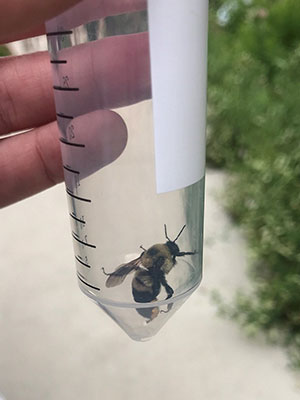Original article available in the January 2022 issue of Ecological Indicators at https://www.sciencedirect.com/science/article/pii/S1470160X2101116X
Share This Post

Agreement matrices between biologist and community scientists for six amphibian species (Western Toad (Anaxyrus boreas; WT), Boreal Chorus Frog (Pseudacris maculata BCF), Wood Frog (Lithobates sylvatics; WF), Columbia Spotted Frog (Rana luteiventris; CSF), Northern Leopard Frog(Lithobates pipiens; NLF), and Western Tiger Salamander(Ambystoma mavortium; WTS)).
The Rocky Mountain Amphibian Project (RMAP) began including community scientists in amphibian monitoring in Wyoming and Colorado in 2014. Since then, more than 320 community scientists have contributed data to this long-term monitoring project. Their contributions have proven to be incredibly beneficial, as illustrated in this new publication from the founders and researchers behind RMAP. The Wyoming Game and Fish Department state herpetological coordinator, two University of Wyoming Researchers, and three current and former Biodiversity Institute project coordinators contributed to the paper.
Analysis of all data collected since 2014 found that community scientists can identify and detect species with the same proficiency as professional biologists. In addition, involving community scientists is a huge benefit to agency biologists who face resource limitations in conducting these large-scale, long-term monitoring studies. Without the help of these community scientists, our knowledge of amphibians throughout Wyoming and Colorado would be greatly diminished!
You can access the article in the January 2022 issue of Ecological Indicators at https://www.sciencedirect.com/science/article/pii/S1470160X2101116X

Social Media
Latest News



Archives
- All
- May 2025
- April 2025
- March 2025
- February 2025
- January 2025
- November 2024
- October 2024
- September 2024
- August 2024
- July 2024
- June 2024
- May 2024
- April 2024
- March 2024
- February 2024
- January 2024
- December 2023
- November 2023
- August 2023
- July 2023
- April 2023
- September 2022
- August 2022
- July 2022
- June 2022
- May 2022
- April 2022
- March 2022
- February 2022
- January 2022
- December 2021
- November 2021
- October 2021
- September 2021
- August 2021
- May 2021
- April 2021
- March 2021
- October 2020
- August 2020
- July 2020
- January 2020
- March 2019

